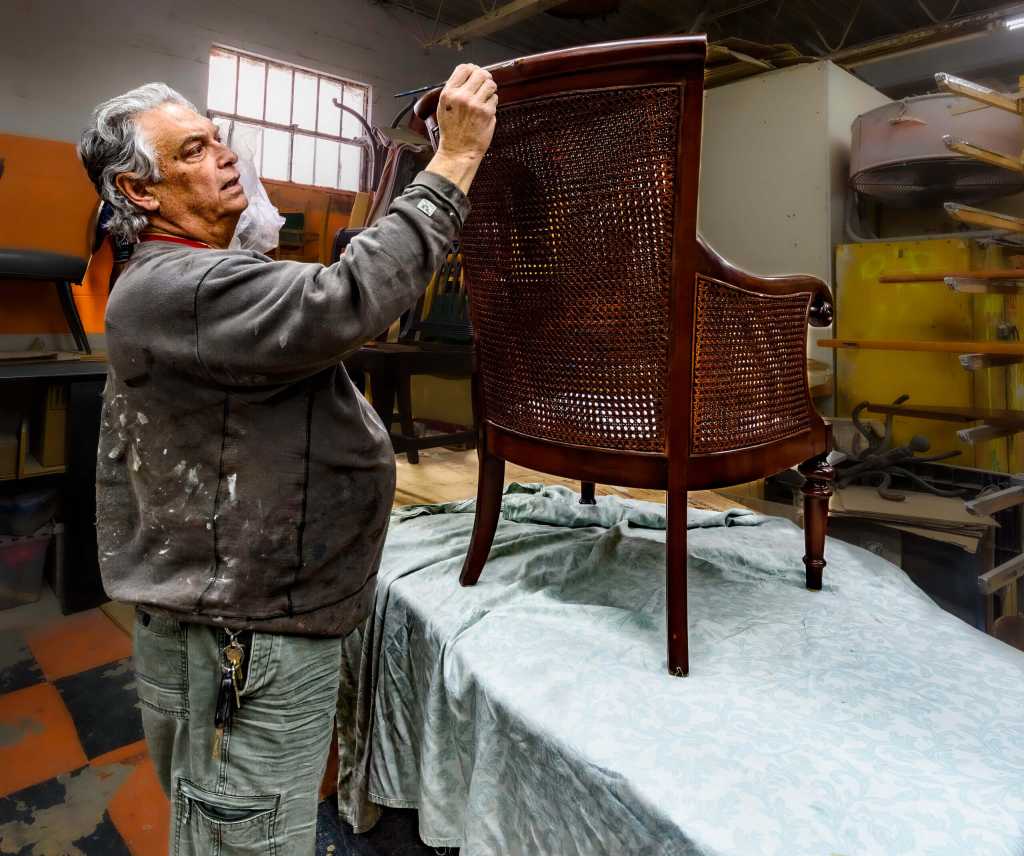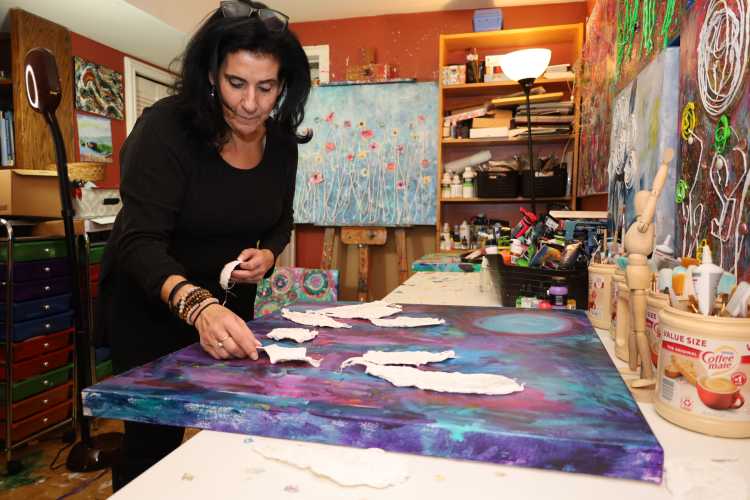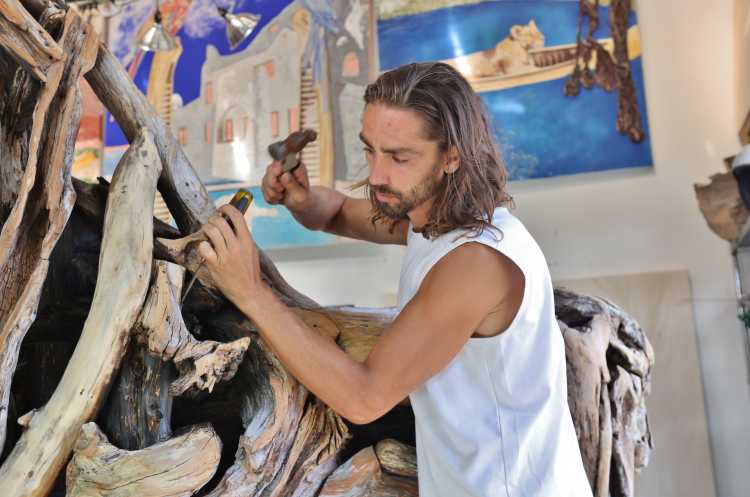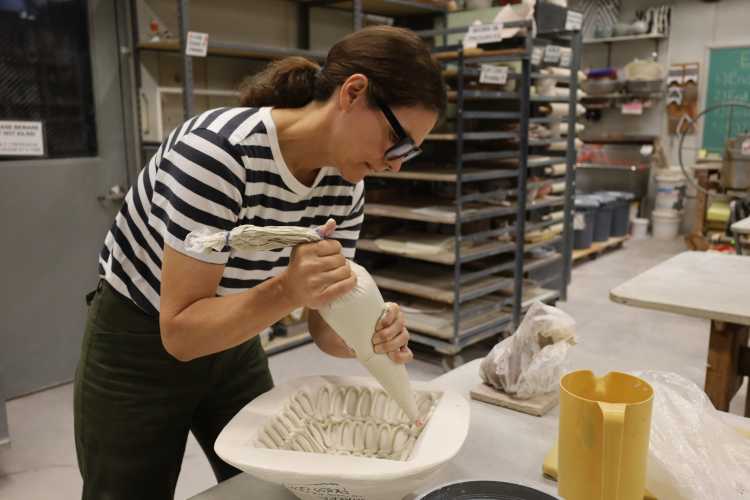Frank Tedeschi Sr. specializes in making older furniture look new or at least good as new. So it’s no surprise that he’s very aware of what, technically, constitutes an antique.
“There is antique furniture, but most of it is vintage furniture as opposed to antiques,” he says in his Island Park workshop. “The definition of antique furniture is something that’s 100 years old and is special, almost one of a kind.”
Tedeschi, who owns The Refinishing Company Inc., at 4140 Austin Boulevard, in Island Park, does much of the work himself.
“Each job is different,” he says. “We do it in stages. We do everything by hand. We strip, wash, clean, sand and then do whatever the customer wants.”

In an often high-tech world, he specializes in high-touch, primarily doing work at residences. He goes to homes or looks at pictures, gives estimates, picks up furniture and brings it to his shop, where the work begins.
“We do new veneers and make pieces in the shop to repair,” he says. “We do carving. If something needs to be carved, we do that to match.”
Tedeschi says he works for clients from Montauk to Manhattan, but some work ends up in residences abroad, such as dozens of pieces of furniture he restored for someone with an additional home in France.
“A lot of it was antique,” he says of furniture shipped in containers to France. “It needed a lot of tender loving care.”

customer’s cherished pieces.Alfonse Anacrelico
Tedeschi stripped down and restored a Queen Anne-style dining room table set for 12 people complete with leaves. “We had a very old walnut desk where many pieces needed to be made,” he added.
A key part of furniture restoration involves making the old match the new, creating a seamless single work. While Tedeschi does a lot of the work himself, he says one of his employees has been carving for at least two decades.
“We use all sorts of chisels, different types of sandpaper to sand it all down and install it,” he adds.
He mentions a desk designed to fit in a corner that he restored for the home in France and talks about removing paint to restore former glory.
“There was a really old cabinet with stained glass windows that someone painted blue,” he says. “We had to carefully strip that all out.”

The toughest jobs, he says, are the ones “where you have to make intricate pieces or carvings that you have to copy and fit.”
Reveneering also is difficult, detailed work. “This is a tedious job if you care,” he says. “If you have pride in your work.”
Tedeschi, who is 69 and has a five-star rating on Google, has been refinishing and restoring furniture for most of his life.
“I learned this when I was young,” he says. “My uncle did this. I learned through him.”

He worked for Calvin Klein, restoring furniture in stores.
“I used to go in overnight,” he says. “I would work in their stores and restore the benches in the displays.”
Decades ago, he helped restore elevator cabs in Rockefeller Center, doing the work over weekends. “I went into Rockefeller Center on Friday and stripped and finished the panels in the elevator cabs so they could be used by Monday morning,” he says, noting he did similar work in the Credit Suisse building.
Tedeschi, who started his company back in the 1970s, uses different-shaped sanders, sanding blocks and sandpapers with different grits along with special tools.
“We use little picks and tools like a dentist would use to clean out your teeth,” he says. “We have picks and tools to get into tight crevices and decorative designs.”
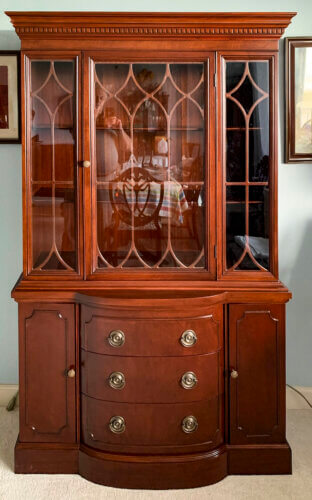
He works hard to get the color right. “They scan it and come up with a stain as close to that as possible,” he says. “They do the same thing with paint.”
Along with the others in his three-person shop, he scrapes out old finish carefully, using sanding pads to get to rounded edges without squaring them off. And they treat each job with care.
He restored a wooden box with a metal lining used to put a family member’s ashes. “I restored it. She didn’t know how to thank me enough,” he says. “I did the refinishing for her.”
When the woman passed away, she left him her dining room set, realizing he truly understood and appreciated the craft that goes into making furniture.
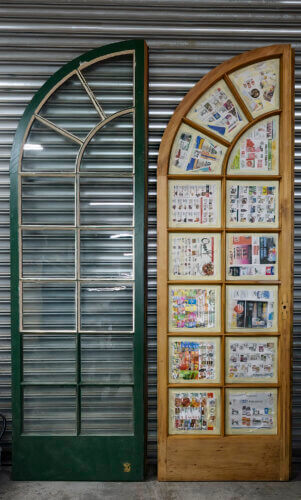
on two antique doors.Alfonse Anacrelico
“She said, ‘Frank is to get this dining room set. Only he will appreciate this set,’” he says. “I went home to my wife and said, ‘A customer willed us the dining room set. We are going to put it in our house.’ And that’s what I did. I restored it.”
He says people often restore pieces with “sentimental significance” as well as aesthetic appeal. “A lot of it is sentimental,” he says. “Some of it is it fits in their space, so they have it restored.”
He also works on new furniture. “Woodworkers come to me and say, ‘Can you finish these cabinets?’” he says. “And I do outside work, furniture and doors.”
He recently did furniture for a boat, stripping everything down to the bare wood and spraying numerous coats of exterior finish made for boats. And he refinished 80-year-old rattan furniture, although he says materials cost more these days.

“I used to pay $80 for a roll of cane. I just caned a bunch of chairs, “ he says. “ It cost me $380 for the same roll of cane with shipping and handling.”
Although people from all sorts of backgrounds go into furniture refinishing and restoring, Tedeschi is among those with an Italian heritage, still common in this craft.
“I think there’s a lot of Italian descent,” he says. “A lot of people from Europe learn this skill. It’s a dying trade. There aren’t a lot of new companies doing this.”
He talks about a shortage of people going into this and many crafts. “Young kids don’t go for this,” Tedeschi adds. “You need a young person who’s an old soul or a middle-aged or old person.”
While you need the right skills, tools and temperament, caring about quality in one’s craft may be the single most important element when it comes to doing great work.
“I enjoy the satisfaction of taking something and making it look new again,” he says. “I have pride in my work.”
This article appeared in the May edition of Behind The Hedges Powered By the Long Island Press. Read the full issue here. For more Master Craftsman columns, click here.

